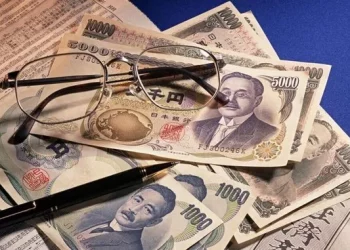When it comes to foreign exchange (Forex) trading, one of the most commonly asked questions revolves around currency conversion. A particular question that many ask is, “How much is $6000 Australian dollars in US dollars?” Understanding the mechanics of currency conversion is essential for both casual travelers and traders involved in the financial markets. In this article, we will break down how much $6000 AUD (Australian dollars) equals in USD (United States dollars), explore the factors that influence exchange rates, and give you an overview of the Forex market where such conversions take place.
Before diving into the specifics of this conversion, it’s important to note that exchange rates fluctuate constantly due to a wide array of economic and geopolitical factors. Therefore, the exact conversion at any given time may vary.
What is the Exchange Rate Between AUD and USD?
The exchange rate between two currencies is the price at which one currency can be exchanged for another. In this case, the exchange rate between the Australian Dollar (AUD) and the United States Dollar (USD) dictates how much USD you will receive for every unit of AUD. These rates fluctuate daily, and can even change by the minute, depending on the demand for each currency in the global market.
To convert Australian dollars to US dollars, you would multiply the amount in AUD by the current exchange rate between AUD and USD. For example, if the exchange rate is 0.66, then $6000 AUD would be worth 6000 x 0.66 = $3960 USD. However, the exchange rate can vary between different financial institutions, money transfer services, and currency exchange providers.
At the time of writing, the exchange rate for AUD/USD is approximately 0.66, meaning that for every 1 Australian dollar, you will get about 0.66 US dollars. Based on this exchange rate, $6000 AUD would be equivalent to approximately $3960 USD. This is, of course, an approximation, and you should check the current exchange rate for the most accurate conversion at the time of your transaction.
The Role of the Forex Market in Currency Conversion
The Forex market is the largest and most liquid financial market in the world. It involves the trading of different currencies, and its size and complexity are unmatched. According to the Bank for International Settlements (BIS), over $6 trillion in daily trading volume is processed in the Forex market.
Forex trading takes place 24 hours a day, five days a week, across various time zones. Major currencies such as the USD, Euro (EUR), British Pound (GBP), and Japanese Yen (JPY) are actively traded, but currencies like the Australian Dollar (AUD) are also highly liquid and widely used in global trading.
In the Forex market, currency pairs such as AUD/USD are quoted with two prices: the bid price and the ask price. The bid price is the price at which a trader is willing to buy the base currency (AUD in this case), and the ask price is the price at which they are willing to sell it. The difference between these two prices is known as the “spread,” and it reflects the liquidity and volatility of a currency pair. This spread plays an important role in determining the effective exchange rate at any given moment.
Traders in the Forex market can influence exchange rates based on their actions. When there is high demand for the AUD, for instance, the value of the Australian Dollar rises relative to other currencies like the USD. On the other hand, when demand for the USD increases, the value of the US Dollar strengthens, and the Australian Dollar loses value in comparison.
Factors That Affect Exchange Rates
Several factors affect exchange rates in the Forex market, and these factors determine whether the Australian Dollar is strong or weak relative to the US Dollar. Understanding these factors is key for anyone interested in currency exchange, particularly for foreign exchange traders.
Interest Rates: Central banks, such as the Reserve Bank of Australia (RBA) and the Federal Reserve in the United States, set interest rates for their respective economies. Higher interest rates tend to attract foreign investment, which increases demand for the currency of the country with the higher interest rates. As a result, the currency appreciates. Conversely, when interest rates are low, currencies may weaken. Thus, if the Federal Reserve increases interest rates, the US Dollar may strengthen against the Australian Dollar.
Economic Indicators: Economic data, such as GDP growth, employment figures, and inflation rates, have a significant impact on exchange rates. A country with strong economic growth often experiences an increase in demand for its currency, causing the currency to appreciate. If Australia is experiencing strong economic performance, the Australian Dollar may rise against the US Dollar. Conversely, if the US economy is doing well, the US Dollar may strengthen relative to the AUD.
Political Stability: Political events, such as elections, trade agreements, and geopolitical tensions, can cause volatility in currency markets. A stable political environment tends to strengthen a country’s currency, as it fosters investor confidence. In contrast, political instability can lead to a depreciation in currency value. In this context, if there is uncertainty in the Australian political landscape, the Australian Dollar may weaken against the US Dollar.
Market Sentiment: Forex markets are influenced not only by fundamental economic factors but also by market sentiment. Speculators and traders often base their decisions on their perception of how an economy will perform, influencing the demand for a particular currency. If traders expect the Australian economy to perform well, they may buy AUD, increasing its value relative to the US Dollar.
Commodity Prices: Australia is a major exporter of commodities like iron ore, coal, and gold. Fluctuations in commodity prices can have a significant impact on the value of the Australian Dollar. If commodity prices rise, the Australian Dollar may appreciate because demand for Australian exports increases, and vice versa.
Global Events: Global events such as natural disasters, financial crises, or significant policy shifts can create fluctuations in currency values. These events can disrupt economic activities and lead to uncertainty, causing traders to shift their investments. This shift can result in a significant change in exchange rates.
Using Online Tools for Currency Conversion
While it’s important to have an understanding of the factors that influence exchange rates, the actual process of converting AUD to USD is relatively simple. Today, many tools are available to make the currency conversion process straightforward. Online currency converters are widely used, and they provide real-time conversion rates based on the latest data from Forex markets.
Websites such as XE, OANDA, and Google Finance allow users to input the amount of AUD they wish to convert and automatically calculate the value in USD. These converters use real-time data to reflect the current market exchange rates, ensuring an accurate conversion.
For example, if you were to use a currency converter on one of these sites, it would show the current exchange rate for AUD/USD and provide an instant calculation of how much $6000 AUD is worth in USD. It’s important to note, however, that these online converters provide an approximate value, and the final conversion might be slightly different depending on transaction fees, spreads, and the provider you are using.
Converting $6000 AUD to USD Through Different Channels
When converting currency, it’s important to consider the method or service you use for the transaction. Different providers offer varying exchange rates and charge different fees, which can impact the amount of USD you receive. Some of the most common ways to convert AUD to USD include:
Banks: Most banks offer currency exchange services for their customers. However, banks typically charge higher fees and may offer less favorable exchange rates compared to Forex brokers or online platforms. If you are converting a large sum, like $6000 AUD, it’s worth checking the rates offered by your bank and comparing them to other options.
Currency Exchange Bureaus: These establishments are commonly found at airports and tourist locations. While they offer convenience, their exchange rates are usually less favorable, and they may charge higher fees or offer lower conversion rates.
Forex Brokers and Online Platforms: Forex brokers provide access to the global foreign exchange market and often offer competitive rates. They also allow you to trade in real-time and track currency pairs like AUD/USD. Online platforms such as TransferWise (now Wise) and Revolut provide easy-to-use apps for converting and transferring currency at favorable rates.
Money Transfer Services: Services like Western Union and MoneyGram provide fast transfers, but they may charge higher fees for international money transfers. Their exchange rates are usually not as favorable as those offered by Forex brokers or online platforms.
Conclusion
At the time of writing, the exchange rate for 1 AUD to USD is approximately 0.66, meaning $6000 AUD is worth roughly $3960 USD. However, exchange rates fluctuate daily based on economic and geopolitical factors, so this value may change by the time you make your conversion.
To get the best deal when converting Australian dollars to US dollars, it’s important to compare the exchange rates offered by various service providers, including banks, Forex brokers, and online platforms. Additionally, understanding the factors that affect exchange rates can help you make better decisions and predict future fluctuations in currency values.
Lastly, whether you’re a Forex trader, a tourist, or someone involved in international business, staying informed about currency conversion rates and using reliable tools to calculate conversions is essential to managing your finances efficiently.
Related Topics:




























